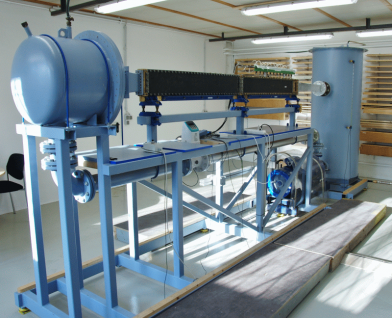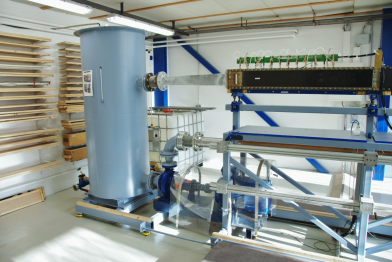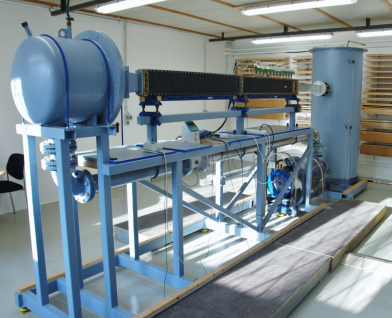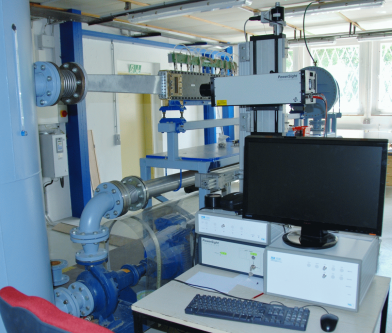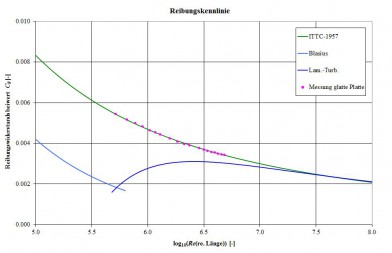The frictional resistance of a ship is a substantial part of the total resistance. This is influenced, among other things, by the texture of the skin (e.g., type of coating, degree of fouling). To minimise the power consumption and thereby reduce costs and protect the environment, it is therefore sensible to hold frictional resistance as low as possible by special coatings or surface structures. Corresponding studies can be performed on the friction measuring system. A roughness analysis of the surface by itself is not sufficient to deduce the exact frictional resistance. Experimental studies allow for more accurate conclusions. For this purpose, two plates with the coating to be tested are installed so that these form a narrow rectangular channel which is traversed by water in the friction test section. By the simultaneous measurement of the flow rate and the pressure loss along the test section and the water temperature, the wall shear stress can be detected and finally the frictional resistance coefficient of the plates is calculated. The results are transferrable to the frictional resistance of the ship. In order to cover the largest possible range of speeds, up to 20 m/s can be run in the friction measuring system.
These studies are not limited to the shipbuilding industry, but are also applicable in the aerospace and automotive industries. The results from the friction measuring system are also transferrable for these applications and can be profitably implemented where friction plays a role.
Context Related References / Research Projects
[1] Schulze, R.: Measurement of Skin Friction Drag and Design of Riblet Structures for a Ship Application, AIRBUS, Bremen, 30. Juni 2015
